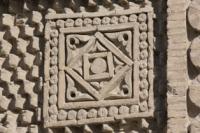You are here
Bukhara with the Samanids.

Individual tours in Bukhara
“Everything is in the hands of the Lord, and only History has slipped out of His control”
Zbignev Ezhina.
Tours and excursions to Bukhara.
Bukhara with the Samanids in the period from the IX to the X century. C VIII - IX century. Bukhara became the main center for the spread of Islam in Maverannakhr. The city’s name was glorified by eminent theologians, among whom the author of the classical set of legends about the Prophet Muhammad, Imam al-Bukhari (d. 870), stands out.
For her contribution to the development of Islamic teachings, Bukhara received honorary titles “sacred” and “noble” in the Muslim world. At the end of the ninth century. The city became the capital of the large state of Samanids (875-999), who owned Maverannahr, Khorasan and Sistan.
Most of the medieval Muslim coins from the treasures of Europe are Samanid. Under the Samanids, Bukhara increased significantly in size. For two centuries, new artisan quarters and many caravanserais appeared, and the central part of the city became a big market.
Bukhara was reinstated with a fortress wall. A new royal palace was erected in its northern part. At the same time, one of the first Central Asian madrasahs (Farjack) and a minaret was erected in Bukhara, and a huge library of manuscripts was created at the Samanid Palace, in which at the end of the 10th century.
Worked Ibn Sina (Avicenna).
Enlightener:
VG Saakov "History of Bukhara". Shark Publishing House, 1996. “Bukhara. Masterpieces of Central Asia. Historical guide to Bukhara. year 2012. "Bukhoro Bukhara Bukhara" In Uzbek, English and Russian. Publishing House "Uzbekistan", Tashkent 2000. Muhammad Narshahi. History of Bukhara. Tashkent. 1897 (translated by N. Lykoshin). V.G. Saakov Architectural masterpieces of Bukhara. Bukhara regional society "Kitabhon" Uz SSR, Rovno 1991, Robert Almeyev. The history of ancient Bukhara. (Edited by Academician of the Academy of Sciences of the Republic of Uzbekistan Rtveladze E.V.)







